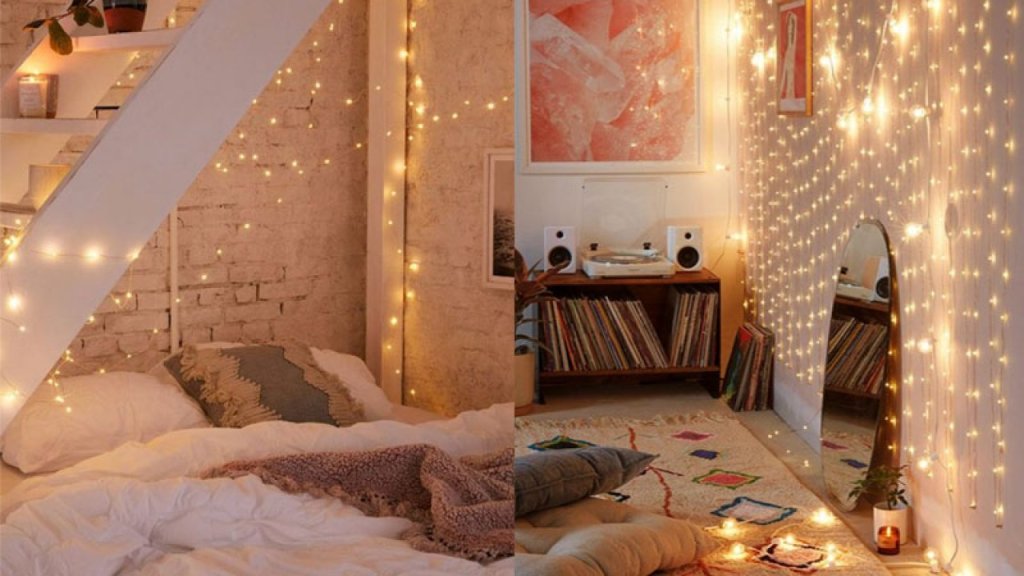The room is a position of rest and unwinding. One of the most fundamental fixings to the room’s serene environment is its lighting. Utilizing layers of surrounding, errand and complement lighting with cautious situations and darkening controls will enormously affect the room’s look and feel. In this room lighting guide, we will go over fundamental room lighting tips and how to layer room lights. This incorporates picking the right bulbs for wanted brilliance and variety temperature.
Layering the Lights in Your Bedroom
Knowing how to layer lighting is the way to making the best lighting in each room including the dining room. This implies tracking down the right harmony between surrounding, errand and highlight lighting. By making this equilibrium, you will actually want to make the lighting for any mind-set and any movement with the flick of a switch. Start with surrounding lighting (otherwise called general lighting). Surrounding light incorporates regular lighting through huge windows or lookout windows, or fake lighting — whatever gives a good measure of lighting that empowers general assignments like cleaning, collapsing garments or making the bed.
Assuming you hope to do exercises that require a smidgen more clarity of mind, such as perusing, working, prepping or putting on cosmetics, then consider layering on top of your general lighting with task lights. Centered task lighting need not be restricted to the conventional work area task light. Seeing these lights with Blue light glasses can give you an awesome look. Table lights with light-hued conceals are preferred for pursuing those with dim shades, as a dull shade would weaken the light’s brilliance. Swing-arm lights are great for centered perusing, while additional masterfully planned table lights or even pendants make a more encompassing and mitigating environment. Additionally consider low balancing pendants on one or the other side of the bed, sconces, and divider mounted task lights on one or the other side of a headboard or other directional lighting put above it.
Picking the Right Bulb
As you layer your room lighting, it’s likewise critical to consider the kind of bulb you’ll use for every installation. Contingent upon the bulb’s lighting power and the variety it produces, it can possibly emphatically or adversely influence the manner in which you work during and after a given action. However, before you set off to chase after any old bulb, you’ll need to sort out your favored splendor level, or lumens. While the proposed lumens for the room range somewhere in the range of 2,000 and 4,000, this is an emotional choice that changes in light of the kind of feeling you crave for your room.
In the wake of choosing the greatest lumen result of a bulb, you want to consider assuming the bulb type you need is dimmable. CFLs (or Compact Fluorescent Lamps) are hard to control with a standard dimmer, similar to a few low-voltage LEDs. In these cases, extraordinary dimmers will be required for smooth, glimmer and sans buzz control.
Variety
Light variety assumes a significant part with supporting specific exercises. First off, ponder the sort of bulb: radiant/halogen bulbs regularly emit a delicate white gleam, CFLs will more often than not diffuse a ton of blue (in spite of the fact that they have developed to incorporate a more extensive range of varieties), while LEDs can run a scope of variety temperatures.
As white and blue light tones have been displayed to advance sharpness, lighting with such tints are best utilized with task or directional lighting to help centered exercises. Since blue and white lights increase sharpness and consequently stifle the development of melatonin (or chemicals that actuate rest), they are not great assuming you’re attempting to slow down and unwind in the room in the wake of a difficult day. Then again, lighting that diffuses hotter varieties (like yellow) don’t obstruct melatonin creation. In this way, hotter lights are best for room exercises like perusing, sitting in front of the TV or essentially unwinding.
Mirror Dressing:
Current inside plan patterns show that dressing a mirror with lights is unquestionably a thing! A segment of LEDs around a mirror looks perfect, or you might need to go the alternate way and reproduce the showbiz changing area look, which is likewise noteworthy. One way or another, you ought to look at inside plan web journals and different media for thought in this field. We recommend that LED strip lighting is the best technique for accomplishing a lit mirror look as the absence of intensity makes it more agreeable, so see now and see what thoughts you can think of.
Final thoughts:
With the developing elements of the room comes the requirement for appropriate lighting to help these capacities and for entrance you always have foundation plants. Between fitting lighting layers, dimmers and appropriate bulbs, getting these perspectives right is a certain fire approach to guaranteeing an open to lighting circumstance in your room. Thus, get imaginative and pick the apparatuses you want to get the room lighting plan you need here.

